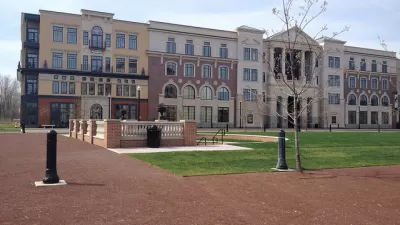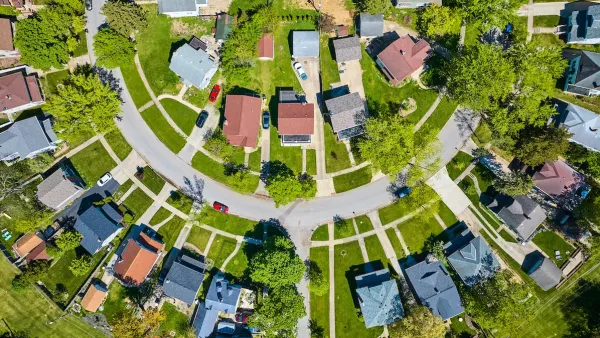A new book about unconventional suburbs challenges the perception that these were socially and racially homogenous places.

In an excerpt from her new book Radical Suburbs, Amanda Kolson Hurley describes various experimental communities that sprung up from the 1820s to the 1960s outside of cities and challenge conventional notions of American suburbs. "These groups had very different backgrounds and motivations, but all of them believed in the power of the local community to shape moral and social values, and in the freedom provided by outskirts land to live and build in new ways."
Hurley says that the perception of suburbs as filled with tracts of cookie-cutter homes where middle-class whites resided is not wrong, but it is a limited understanding of their diversity. Lower-income suburbs existed as did black and integrated suburbs, suburbs based on religious ideology, and suburbs founded by anarchists and socialists.
For Hurley, looking back at the past is important as demographic, social, and economic changes influence the transformation of present-day suburbs. "Heavy-handed zoning and land-use regulations might try to make time stand still, but nothing is predestined about the future of suburbia, where most Americans live. Instead of despairing over the suburbs’ problems, we should be inspired by suburban history to try to solve them."
FULL STORY: The Secret History of the Suburbs

Maui's Vacation Rental Debate Turns Ugly
Verbal attacks, misinformation campaigns and fistfights plague a high-stakes debate to convert thousands of vacation rentals into long-term housing.

Planetizen Federal Action Tracker
A weekly monitor of how Trump’s orders and actions are impacting planners and planning in America.

San Francisco Suspends Traffic Calming Amidst Record Deaths
Citing “a challenging fiscal landscape,” the city will cease the program on the heels of 42 traffic deaths, including 24 pedestrians.

Bend, Oregon Zoning Reforms Prioritize Small-Scale Housing
The city altered its zoning code to allow multi-family housing and eliminated parking mandates citywide.

Amtrak Cutting Jobs, Funding to High-Speed Rail
The agency plans to cut 10 percent of its workforce and has confirmed it will not fund new high-speed rail projects.

LA Denies Basic Services to Unhoused Residents
The city has repeatedly failed to respond to requests for trash pickup at encampment sites, and eliminated a program that provided mobile showers and toilets.
Urban Design for Planners 1: Software Tools
This six-course series explores essential urban design concepts using open source software and equips planners with the tools they need to participate fully in the urban design process.
Planning for Universal Design
Learn the tools for implementing Universal Design in planning regulations.
planning NEXT
Appalachian Highlands Housing Partners
Mpact (founded as Rail~Volution)
City of Camden Redevelopment Agency
City of Astoria
City of Portland
City of Laramie




























